The gallery is ablaze with colors, overflowing with texture in organic currents of fiber and wood that are somehow both serene and exciting. At the center of it: a small 84-year-old woman.
Sophie Cowman has spent decades working on her art — but she’s uncomfortable being called an artist. She prefers “craftsman.”
No lofty descriptions of her process and motivations, no high-falutin’ terms about how it all works. For her, it’s pretty basic.
“If I could illustrate some feeling or some part of the landscape, it gave me an excuse for putting color together,” she said.
Cowman grew up in a tiny, isolated town in Idaho, where she befriended trees because she didn’t know any other children. Her mother made clothing on a sewing machine, and Sophie followed suit with clothes for her dolls.
In 1972, she was living in Portland, Oregon, when she decided to roam the country, catching rides with friends and strangers. She was tired of working for other people and yearned for the freedom to express what she saw around her and, sometimes, what she felt inside.
“Using art as an expressive way really helps you understand your emotions — it can be hard to find a good outlet in life,” she said.
Discovering a home
Cowman came to Colorado to visit her brother and recognized Manitou Springs as the place she could settle.
“I thought, ‘The wood is here, the town is small enough, I can make my craft happen here,’” she said.
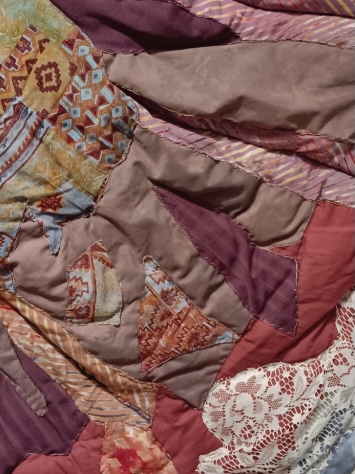
Cowman would visit Manitou and stop by shops, asking if the merchants were planning to leave that location and, if so, could she move into the space.
She found a location in the 700 block of Manitou Avenue. It cost $90 a month and she could live in the back. She invited other artists to display their work and usually charged about a 10 percent commission on sales.
“I didn’t have to get big bucks from them for their work. That was a principle that I believed in,” she said.
For her, it wasn’t about making money like the “fancy artists”; as long as she could pay the bills, that was fine.
“My prices were low enough, and the pieces were charming enough. That combination of cheap and charming made it easy,” she recalled.
She soon moved west on the same block, the first of many moves around Manitou. Once, she and a stained-glass artist who needed more space decided to swap locations. They didn’t notify their landlords, they just rounded up people to help carry things.
She was happy in her adopted home.
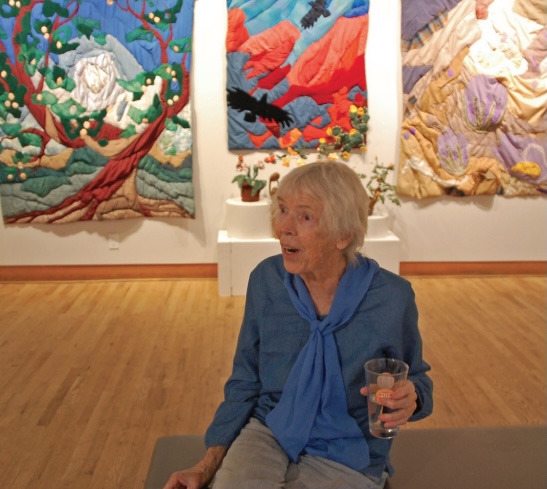
“Every day, I could carve because it was my way of being, and I could probably start a new quilt every two weeks,” Cowman said.
People had started dropping off clothing for her to take apart and use (she especially loved the clothing with pockets, which she left intact). She estimates that she could make two quilts per month.
Cowman would take her pieces to fairs and farmers markets, paying someone to help her.
One autumn day, she was basking in the sun on her porch and watching leaves fall. She was wearing a blue-and-black plaid shirt and realized it would contrast well with yellow leaves. She cut up the shirt and a quilt grew out of it.
She had floor-to-ceiling stacks of fabric, sorted by color. She’d spread them out and move them around, usually without a fixed idea about the end results, and sit at a table to sew.
“The only mess was the one I was working on at the time,” she said.
Most days, she worked on quilts in the morning and woodcarvings in the afternoon.
Cowman wandered the hills around Manitou to find the Rocky Mountain cedar that would yield its hidden forms to her.
“I once made a little chart of me going around and collecting the wood and bringing it down to the shop, carving it and trading it for good advice, money, friendship, a whole bunch of things my life,” she said.
She’d bag up the wood chips to take home for kindling in her wood-burning stove.
“So it was a circle, where I harvested the deadwood, changed it into what I needed and brought the scraps back home to burn. It kept me warm. It was a tidy little deal.
“But, of course, I didn’t do it tidy. It was chaos.”
Putting it together
“I’m grateful for the Sophies of the world,” Don Goede said.
He can’t remember exactly when he met Cowman; it might have been 10 or 12 years ago. He got to know her better since she lives near SunWater Spa, which he co-founded with Kat Tudor and opened in 2015.
He knew Cowman was a creator, but didn’t fully realize the power and scope of her work.
“I never really understood how prolific she was,” he said.
It was my way of being. – Sophie Cowman
Goede had already applied for an exhibit at the Manitou Art Center and decided to see if Cowman’s work could be displayed instead. He pitched the idea to MAC staff and its board, and got the go-ahead. Then, he took the proposal to Smokebrush Foundation for the Arts.
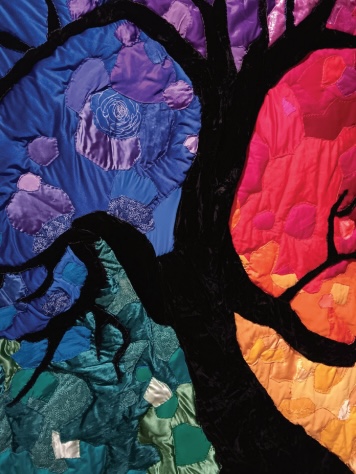
Long story short: Goede, SunWater co-founder Kat Tudor and Iraiah Solstice Waak, a Smokebrush Foundation artist and the collection organizer, became Cowman’s most dedicated support team.
Last fall, they spread the word to collectors of Cowman’s work, asking to borrow pieces for the exhibit, and were overwhelmed — more than 40 people responded.
“I just thought that Manitou would be receptive to it. And I guess my instinct was correct, because people came out of the woodwork,” Goede said.
The exhibit, “Figures & Fibers: Sophie Cowman Community-Curated Art Show,” encompasses 45 carvings, 20 quilts and four soft sculptures.
“I love the contrast in the juxtaposition of working with something so hard, chiseled, and then bam, you go into these soft fabrics,” Goede said.
It has changed the people who brought it to fruition.
“Organizing this show has become a serendipitous deep dive into a complex visionary world,” Waak said.
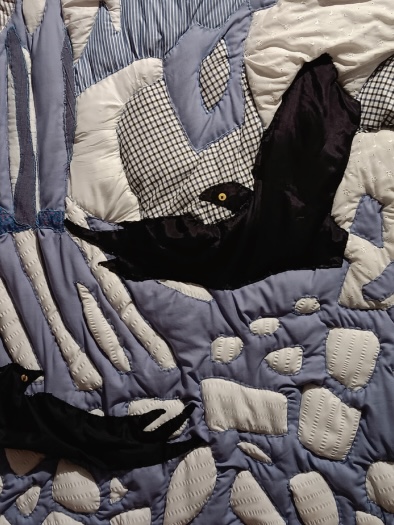
“This art illustrates the beauty of what it means to be connected to your community, the land and one’s intrinsic values for loving life outside of the lines. I am forever grateful for this opportunity to help share Sophie’s vision,” she added.
This experience has made Goede even prouder of the community.
“Manitou is such a special place when it comes to celebrating our own,” he said. “There’s something really cool about when you honor your elders. … I just love that our little town can come together and celebrate this 50 years of pretty expansive and intense and prolific output.”
Sharing with the community
The Friday, Feb. 2, opening reception was packed with people, many of whom have known Cowman for decades and loaned work for the exhibit. Mayor John and Sue Graham proudly pointed out a carving they own; Dan Stuart talked about the weeks he spent learning the art of woodcarving from Cowman.
People of all ages stared, open-mouthed, at the work and respectfully asked Cowman if they could sit with her and talk, maybe get their photos taken with her.
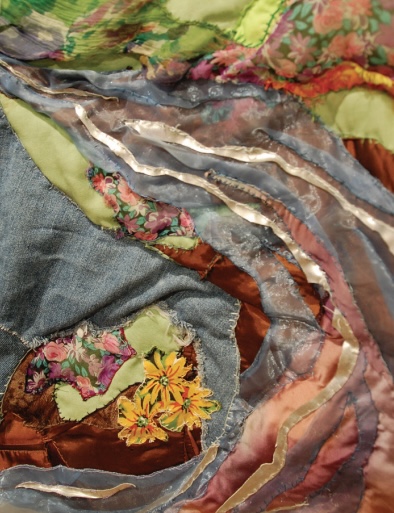
The best art draws in the viewer with promises of new worlds, the kind that reveal their mysteries slowly.
Look deeply into Cowman’s work, then walk away. Come back to the same piece and new elements, such as a crow’s wing, reveal themselves if you are ready.
The quilts are a little M.C. Escher-like that way — if the Dutch artist had been passionate about color. Cowman would probably duck her head shyly about that comparison, but she doesn’t need to.
Hundreds of quilts, thousands of carvings: a life’s work, and a life as a work of art.
Editor’s note: This story also draws on Waak’s interview with Cowman in November 2023.
IF YOU GO
“Figures & Fibers: Sophie Cowman Community-Curated Art Show” is on display at the Manitou Art Center’s Hagnauer Gallery, 513 Manitou Ave., Tuesdays-Saturdays through Saturday, Feb. 24. Information: manitouartcenter.org or 685-1861.

